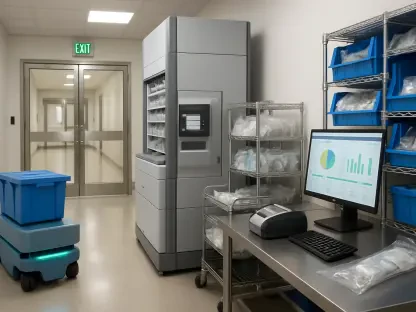California is at the forefront of healthcare transformation with a suite of initiatives that promise to revolutionize primary care across the state. These initiatives not only aim to boost investment in primary care but also emphasize equitable health outcomes.
Policy Reforms
Primary Care Investment Benchmarks
In October 2024, California set ambitious benchmarks to ensure robust funding for primary care. Under these new guidelines, 15% of the Total Medical Expense (TME) is mandated to be directed towards primary care by 2034, which represents a significant commitment to bolstering this crucial component of the healthcare system. Additionally, starting from 2025, an annual improvement rate between 0.5% and 1% of TME for each payer will be required until 2033 to continuously enhance primary care funding.
The Office of Health Care Affordability (OHCA) oversees the implementation and monitoring of these benchmarks, with data collection slated to begin in 2025 and the first reports expected in 2026. Though these benchmarks are non-enforceable, they serve as a strong directive to restructure funding priorities across the state’s healthcare system. By setting these ambitious targets, California aims to create a more sustainable and effective primary care infrastructure that supports better health outcomes for its residents.
Quality Transformation Initiative (QTI)
Another cornerstone of California’s reform efforts is the Quality Transformation Initiative (QTI), launched by Covered California in 2024. This initiative introduces a system of financial incentives and penalties to encourage health plans to meet specific equity-centered health outcome targets. By aligning financial motivations with these goals, QTI aims to drive tangible improvements in the quality and equity of healthcare services.
Early indications suggest that the initiative is making progress, with numerous health plans already showing enhancements in meeting the prescribed measures. These results not only reaffirm the viability of the QTI but also highlight the potential for financial and policy-driven strategies to drive positive change in the healthcare system. The money collected from penalties, amounting to $15 million in its first year, will be reinvested into population health programs focusing on critical areas such as grocery support, well-child visits, vaccination incentives, and additional backing for primary care practices.
Financial Boosts
Increased Medi-Cal Rates
In a significant step to improve the viability and attractiveness of primary care services, starting January 1, 2024, Medi-Cal rates for primary care providers were raised to 87.5% of Medicare rates. This substantial hike in reimbursement rates is underpinned by a newly implemented Managed Care Organization (MCO) Provider Tax and further supported by funding from the Centers for Medicare & Medicaid Services, marking substantial progress in financial allocations towards primary care.
Proposition 35, passed in November 2024, ensured the permanency of the MCO tax, though it did halt additional planned Medi-Cal provider payment increases for the years 2025 and 2026. By significantly increasing the rates, these reforms aim to improve access and incentivize quality care provision among primary care providers. This strategic financial boost is expected to contribute greatly to the sustainability and efficacy of primary care services, ensuring that more residents have access to adequate healthcare.
Primary Care Practice Transformation Funding
To support primary care practices in their quest for transformation, the Department of Health Care Services (DHCS) rolled out the Equity and Practice Transformation Payments Program. This initiative allocates $140 million over three years, primarily focusing on practices that serve Medi-Cal patients. The program’s goal is to facilitate the transition of these practices towards modern, efficient, and patient-centered models of care delivery.
The Population Health Learning Center oversees the program, ensuring that practices not only adopt but successfully integrate these transformative measures. Practices can earn payouts based on the number of Medi-Cal lives they serve and the achievement of specific milestones in patient care. By providing both financial and educational support, this initiative aims to elevate the standard of primary care services across the state, encouraging practices to innovate and improve continuously.
Collaborative Efforts
Care Excellence Program
In a move to promote high standards in primary care, the Purchaser Business Group on Health (PBGH) launched the Care Excellence Program in 2024. This program facilitates a connection between employees, payers, and top-performing primary and specialty care providers. Unlike traditional direct contracting methods, this program offers a “stamp of approval” for practices within California, identifying and promoting those delivering exceptional care.
Blue Shield of California has embraced the program to assess and refine practices in the Bay Area, creating a benchmark for quality and performance. By leveraging such collaborative efforts, California aims to build a healthcare system where high-performing providers are recognized, rewarded, and encouraged to set the standard for others. This initiative represents a proactive approach towards ensuring that quality care is not just an exception but a norm in the state’s healthcare landscape.
CalPERS Contract Initiatives
Effective January 1, 2025, CalPERS took a significant step towards improving the quality and reducing the costs of healthcare for its self-funded PPO plans. New contracts with Blue Shield of California and Included Health aim to introduce innovative approaches towards these goals. The contracts put a staggering $464 million at risk if healthcare cost reduction and quality improvement targets are not met, underscoring the high stakes and commitment involved in this initiative.
By setting such rigorous financial stakes, CalPERS demonstrates its dedication to achieving substantial improvements in healthcare delivery. These initiatives are expected to bring about meaningful change, driving healthcare providers to seek more effective and efficient ways to serve their patients and reduce overall costs. The focus on accountability and measurable outcomes represents a forward-thinking approach to healthcare management, ensuring that quality improvement remains at the forefront.
Education and Leadership
Medical School Involvement
Recognizing the crucial role of education in shaping the future of primary care, California medical schools are increasingly focusing on leadership and advocacy within this field. The USC Keck School of Medicine’s Primary Care in Action program, for instance, embraces student engagement in advocacy efforts, builds training partnerships, and provides leadership opportunities for aspiring primary care practitioners.
Similarly, the UCSF Medical Student Primary Care Leadership Academy’s Health Policy Scholars Program enhances students’ understanding of health policy and advocacy, emphasizing the vital importance of primary care investment. These educational programs are designed to equip future medical professionals with the skills and knowledge necessary to lead and innovate in primary care. By embedding these principles early in their careers, California aims to create a generation of healthcare leaders committed to advancing the quality and breadth of primary care services.
Contract Alignment for Primary Care
California is leading the charge in transforming healthcare with a range of initiatives that are set to revolutionize primary care services throughout the state. These efforts are designed to significantly increase investments in primary care, ensuring that residents receive superior, accessible, and comprehensive care. A key focus of these initiatives is to promote equitable health outcomes, making sure that every Californian, regardless of their socioeconomic status or geographic location, has access to high-quality healthcare.
These initiatives encompass a broad spectrum of strategies, such as integrating innovative technologies in care delivery, enhancing workforce training, and improving patient engagement through community partnerships. Additionally, there is a significant emphasis on preventive care and chronic disease management to reduce long-term healthcare costs and improve overall public health. By prioritizing and investing in primary care, California aims to create a more resilient and efficient healthcare system that can serve as a model for other states.









